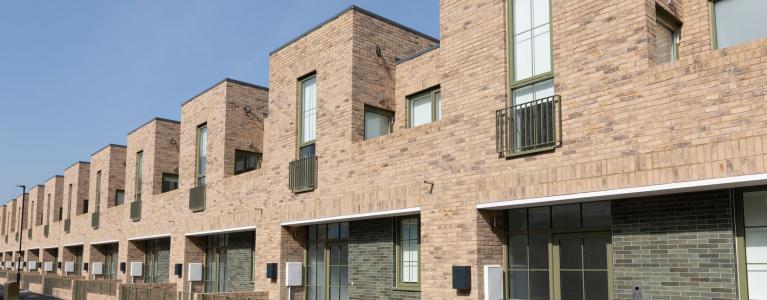
Public health consultant, Emma De Zoete, writes about why good quality, affordable and safe social housing is paramount to good health in London
I am frequently asked what I do. My answer is that if we think about what makes us healthy it is largely about the building blocks of life – a stable job, good pay and work, quality housing and education. Access to these is not spread evenly across the capital - people living in one part of London will live shorter and less healthy lives compared to others, but this is not inevitable. My job is to help the Mayor maximise the opportunities to create health, and address health inequalities (the uneven spread) in his work on housing and vulnerable adults.
At the start of the pandemic I spent all my time working with the rough sleeping team to protect the homeless population from COVID. That work led to the GLA opening up hotels, and the ‘everyone in’ initiative to accommodate people in self-contained accommodation in the first wave of the pandemic followed shortly after. I continue to work closely with that team, on protecting and improving the health of rough sleepers and ultimately ending rough sleeping.
As the GLA group public health unit launches, and following the recent Institute for Health Equity (IHE) evidence review on housing and health in London and the tragic death of Awaab Ishak, I’m struck by the need to repeat what early public health pioneers knew well. A good quality, secure and affordable home is the foundation that everybody needs to lead a healthy life.
We all experienced first-hand through the pandemic how our homes shaped our health. Our ability to isolate in a separate room, to work and study, and our mental and physical health was shaped in large part by our homes. The reality is that housing in London is poorer quality, and less affordable when compared with the rest of the country, and this has powerful consequences for our health.
A lack of affordable housing in London means that people are pushed into high-cost rentals in the private rented sector and this is driving poverty. More than half of homes in London are rented, either socially or privately, and private rents for new tenancies are rising faster in London in 2022 than anywhere else in England. Housing Benefit and Universal Credit caseloads are considerably higher than at the start of 2020 among privately renting households and, in a recent survey, a fifth of all renters in London said they were either behind with their rent payments or expected to fall behind soon.
The impact on children is particularly concerning, and although immediate we have to ask ourselves if we are storing up the next generation of health inequalities. After housing costs are considered, London has the highest rates of poverty in England, and children in the capital are significantly more likely to grow up in after-housing cost poverty than the average for England, with 38% of children in London in poverty in 2019/20. Over 75,000 children live in households in temporary accommodation arranged by local authorities in London, and almost two-thirds (63%) of these families in England are based in the capital.
As London enters a period of the highest inflation in a generation there is a real risk of widening housing-related health inequalities: this includes a particular risk of growing rates of fuel poverty, higher costs of maintenance and repairs, and greater insecurity of tenure leading to rising homelessness, especially for people living in the private rental sector.
As food and energy bills rise, some people will be unable to heat their homes, increasing exposure to damp and mould. Cold homes adversely affect child development, can cause and worsen respiratory conditions, cardiovascular diseases, poor mental health, dementia and hypothermia. It is estimated that 1 in 5 excess winter deaths is due to cold homes.
The impact will be felt in A&E departments across London, and a recent analysis found that the per annum cost to the NHS of poor housing in London is £114m.
The effects of these issues are not equally felt across the city. People from minority ethnic backgrounds experience worse housing conditions and greater housing insecurity and need than White Londoners. Black, Asian and minority ethnicity households in London’s private rented sector are significantly more likely to be in poverty after-housing-costs than White households. Londoners of Asian ethnicity are more likely to live in homes that fail to meet the Decent Homes Standard, while Black Londoners are more likely than people of other ethnicities to have damp problems in their homes. In 2017/18 more than two in three (68%) of statutory homeless households in London were from Black, Asian, mixed or ‘other’ ethnic groups.
These stark inequalities in access to quality, affordable and secure housing are unjust but critically avoidable. The IHE review highlights that there is already a wealth of evidence-based housing interventions across London, that can have clear and tangible benefits to health. These range from affordable housing, selective licensing and enforcement, to supported accommodation, debt advice, and multi-agency working to prevent homelessness. The new Integrated Care Systems (ICSs) which bring together health and local authorities in five areas across London offer a significant opportunity to work more closely on this.
Supporting the GLA in delivering on these, and demonstrating the health impact, will form my work programme in the new GLA Group public health unit. After all, a good quality, secure and affordable home is the foundation that everybody needs to lead a healthy life.
Emma De Zoete, Public health consultant